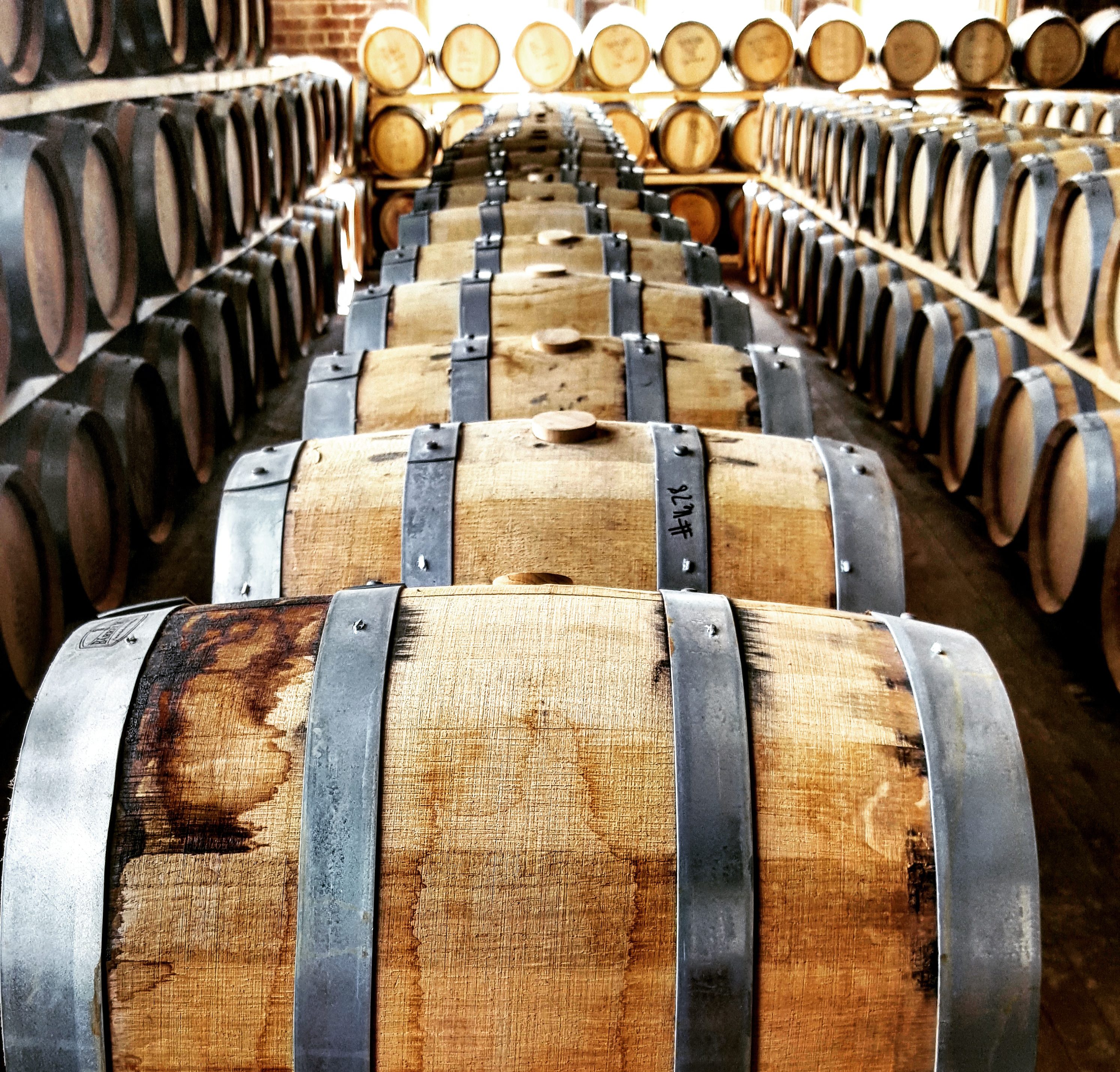Knob Creek. Made at the Jim Beam distillery, Clermont, Kentucky. Has a full, rich sweet nose, fuller on the front palate, and more pleasantly flavorful on the back palate.
Yet in comparison, not as good as the much cheaper Weller Special Reserve. So what else could I compare Knob Creek to? At the time I had several miniatures available for comparison purposes:

I did comparisons on a couple of days (but only have my notes for one of them!) So here we compare Knob Creek bourbon to four other whiskies.

Two come from Terressentia Corporation, a distillery in North Charleston, South Carolina. They have created a buzz with their so-called TerrePURE technology. According to their website they specialize “in contract production of distilled spirits. We produce spirits for large retail chains, individual brand owners, and other distilleries or exporters.”
Instead of aging whiskey, they use chemistry to accelerate chemical reactions, would normally would in whiskey over a period of years. So how do these compare
The Winchester bourbon whiskey tastes young, but not terrible. The label says aged a minimum of 6 months in New Oak. For something so young it’s surprisingly not terrible.
The Winchester rye whiskey has the same description yet a completely different flavor. It tastes young, thin, and is inferior to its bourbon cousin. Compared to a good rye whiskey like Pendleton 1910 or Knob Creek Rye, I’m afraid that the Winchester Rye isn’t very good.
Black Powder Kentucky Straight Bourbon Whiskey – There were some decent reviews of this on the TotalWines website, and often I agree with crowd-sourced reviews more than professional ones, so I took a chance on this. But who makes it? The bottle says LeVecke, but their website vaguely says that it “develops, bottles and markets products in each spirit segment for any corporate brand product line-up.” Translation: They buy generic whiskey, and bottle it under other names. The result, for this label? No great nose, no great impression on the front or rear palate. Utterly forgettable. I sipped it slowly over ten minutes, and dumped the other half of the 50 ml bottle down the drain. Knob Creek and Weller Special Reserve were both better than this as well.
Jim Beam Black Extra Aged – 86 proof, aged in white oak charred barrels. A step-up in product from Jim Beam base product, white label. No age statement. I believe that their original black label was aged 8 years, but this product has since dropped it’s age statement. Chuck Cowdery estimates that the product, which has now lost its age statement, is still likely to be between 4 to 9 years old.
This Jim Beam Black Extra Aged had less of a nose than the other bourbons. Nothing wrong, just not much there. The taste was thin and easy on the front palate, but on the back palate it was rougher, less pleasant. In contrast, Knob Creek was sweeter, fuller, and more pleasantly flavorful on the back palate.
Going back to Terressentia and TerrePURE, is it possible to make good whiskey quickly, without aging, though chemistry? The idea is anathema to much of the whiskey-drinking world, but I found several good articles on the topic:
https://bottomofthebarrelbourbon.com/2015/04/10/better-aging-through-chemistry/
Rapid-Aging Whiskey Technology: GAME CHANGER OR GIMMICK? by Jake Emen –
https://redwhiteandbourbon.com/2015/06/23/the-fallacy-of-instant-bourbon-part-i-the-claims/
https://redwhiteandbourbon.com/2015/07/03/the-fallacy-of-instant-bourbon-part-ii-the-science/
Long Term Changes In Whiskey Maturation

Here you can check out our reviews of bourbon, Scotch, Irish whiskey, Canadian whiskey, ryes or flavored whiskys. We have articles on science & health, and a plethora of other topics. Feel free to learn more about me, Distilled Sunshine.

[…] The LeVecke website vaguely says that it “develops, bottles and markets products in each spirit segment for any corporate brand product line-up.” Translation: They buy generic whiskey, and bottle it under other names. They also make Black Powder Kentucky Straight Bourbon Whiskey. […]
LikeLike